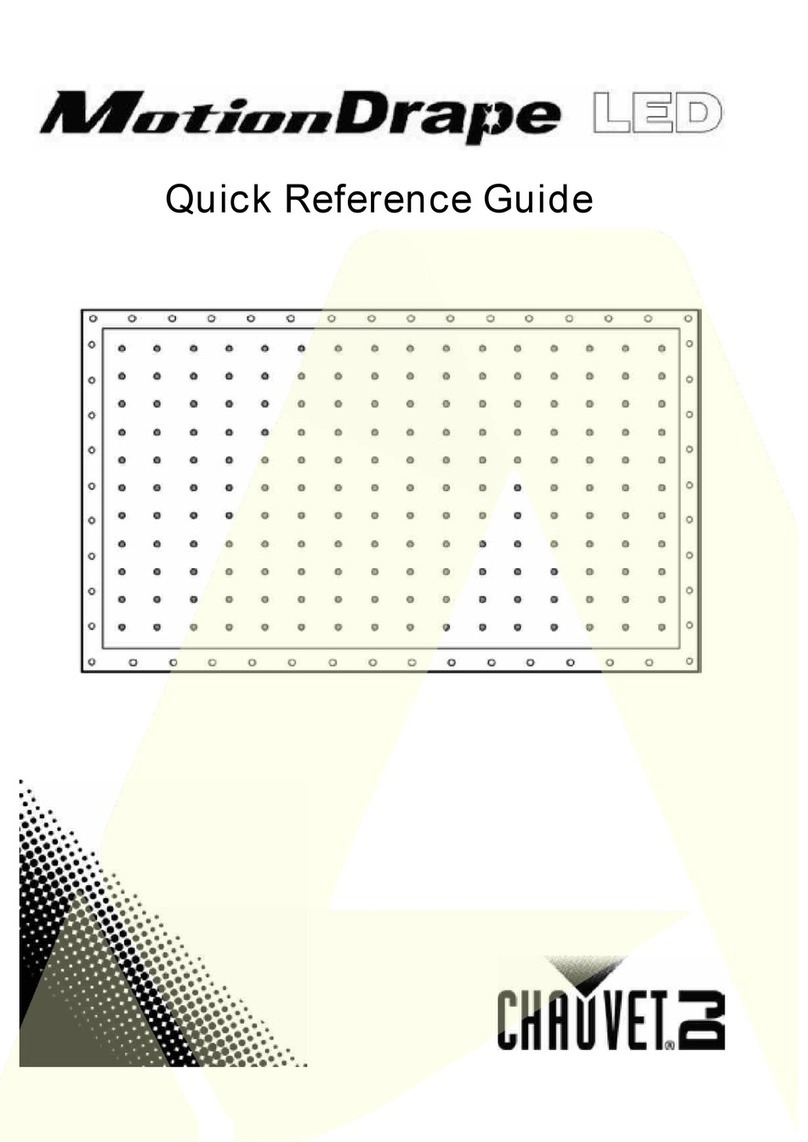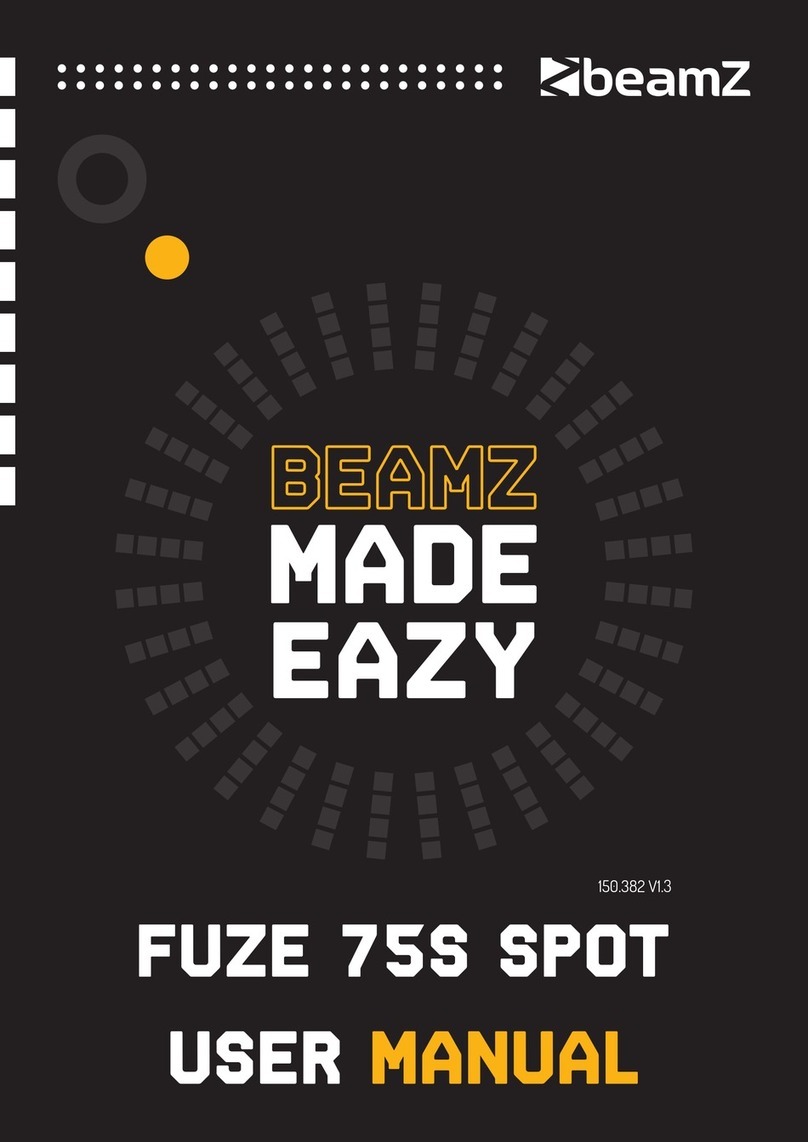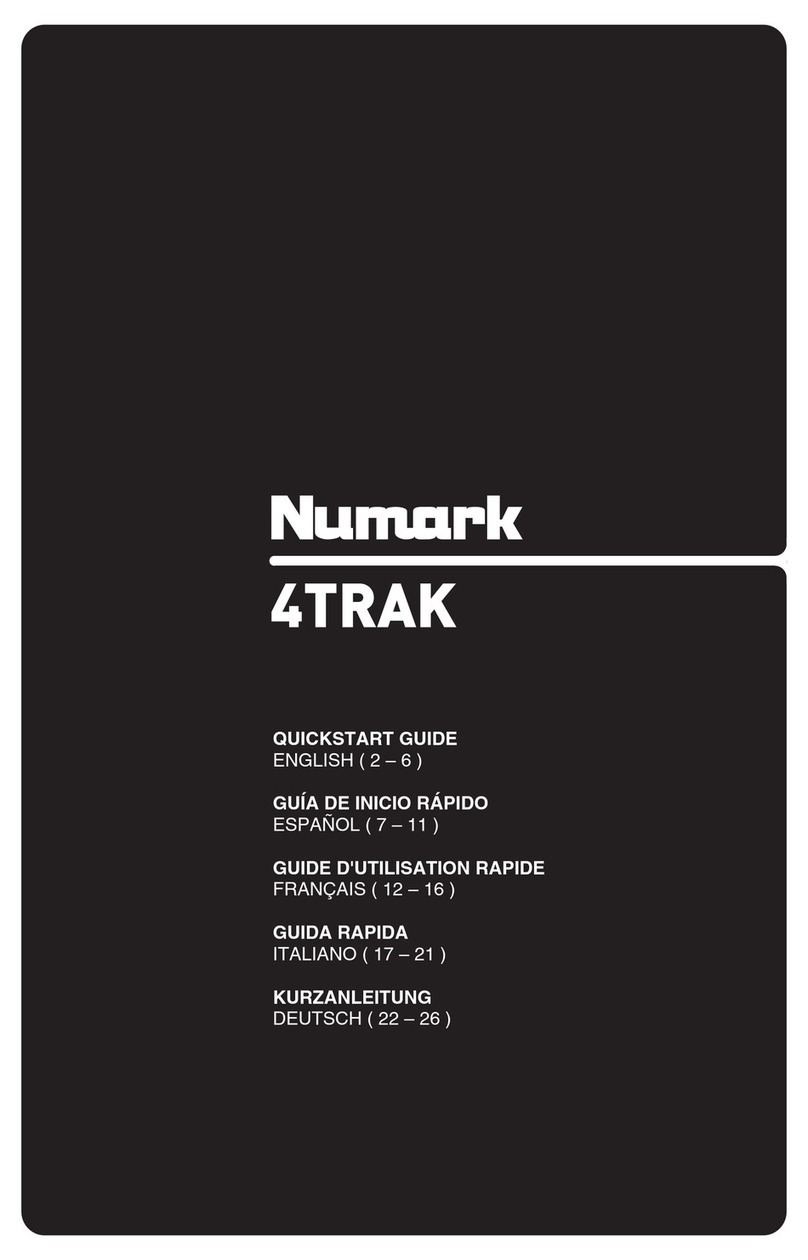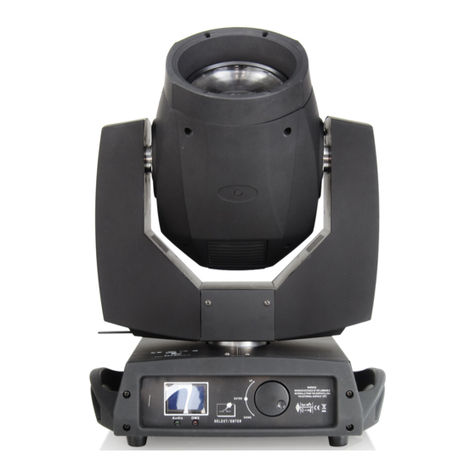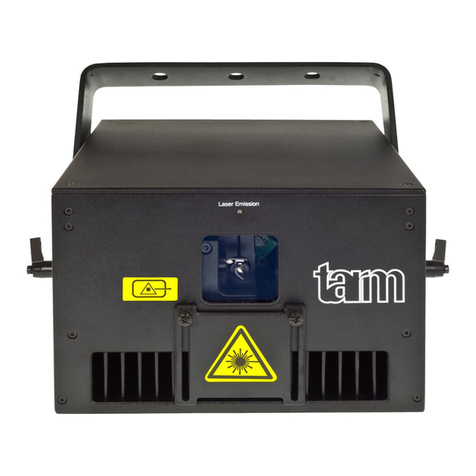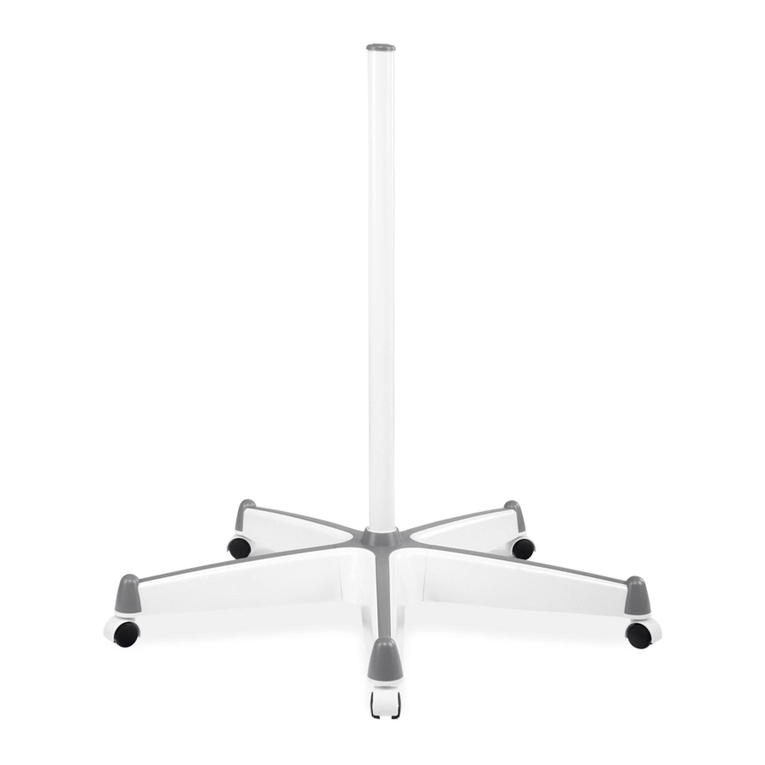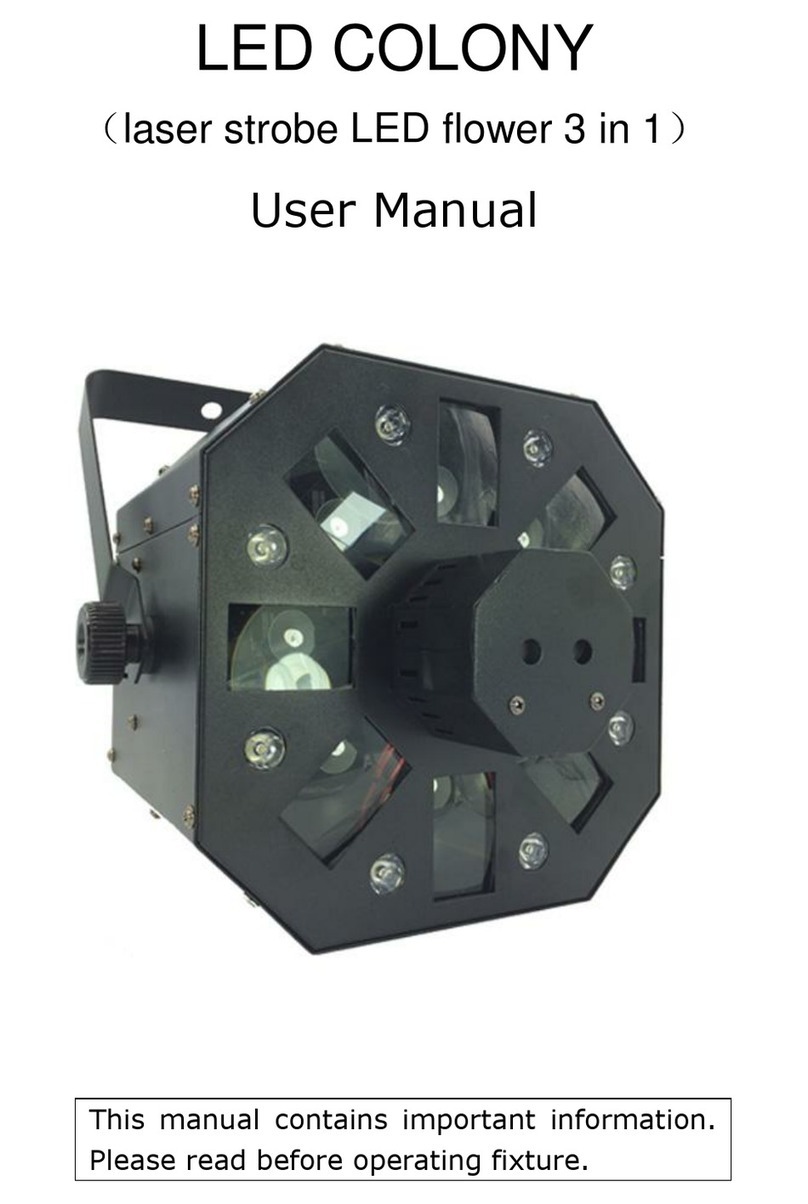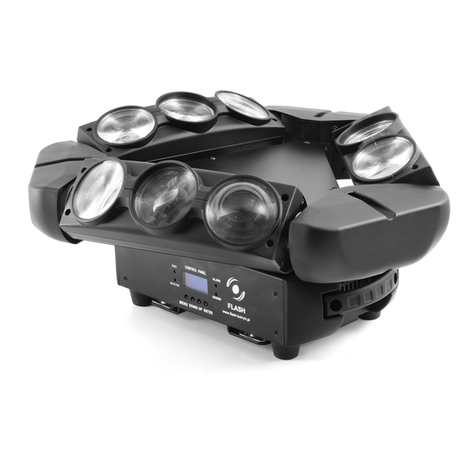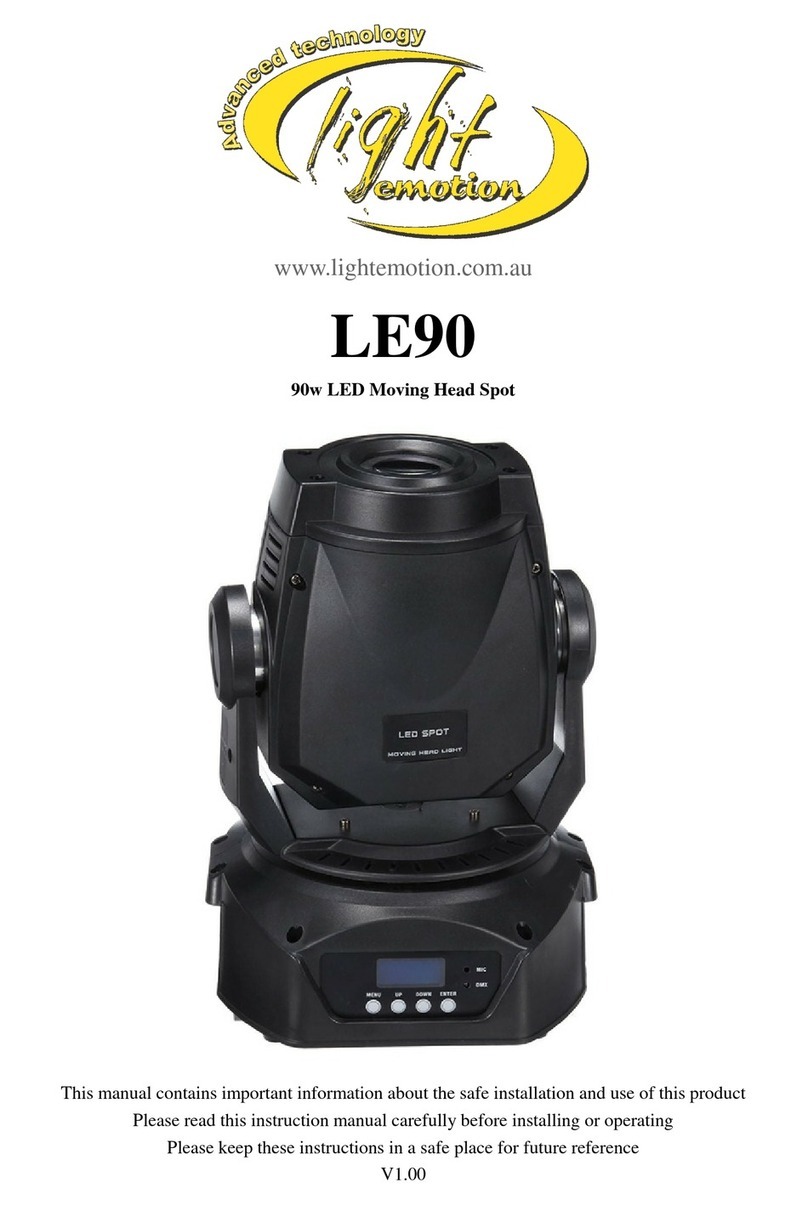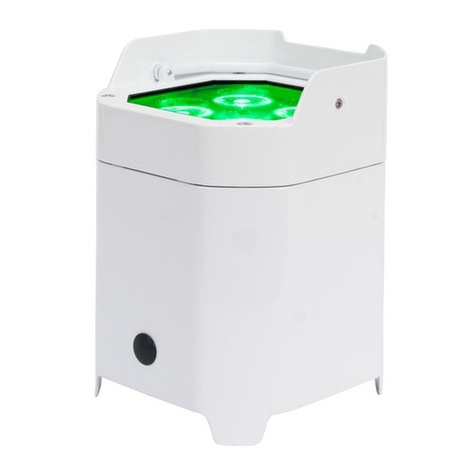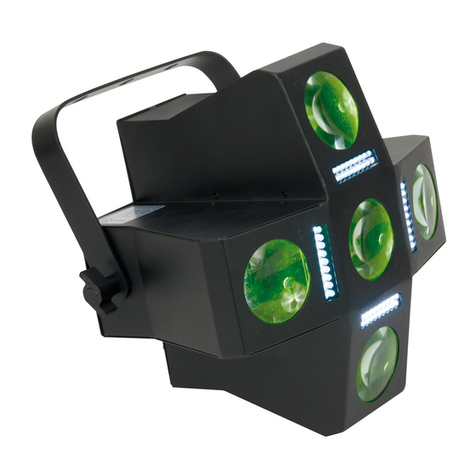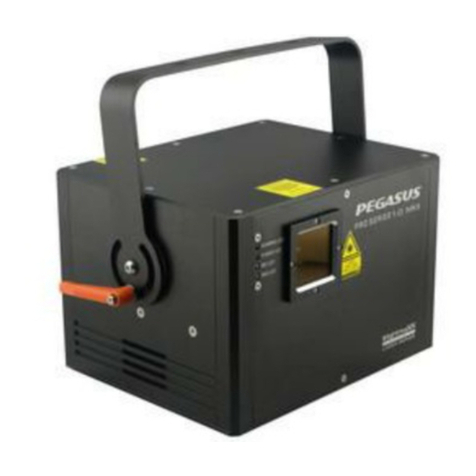BigBlue SV Modular User manual

Big Blue Manual
SV Modular
August, 2019

Big Blue Manual August, 2019
Big Blue Users Manual
Figure 1: Big Blue
Big Blue is what is referred to as a Semi-Modular Synthesizer. Each function has been designed as a
module, but the useful parts are “pre-wired” internally. This means that Big Blue will produce and
output sound without any patching. You can extend the functionality by using the patch bay.
Big Blue provides for eight voice polyphony, allowing you to use up to eight voices from a single input.
Signal Path
Big Blue has five distinct module sections:
SV Modular 2

Big Blue Manual August, 2019
•Voltage Controlled Oscillator (VCO)
•Low Frequency Oscillator (LFO)
•Voltage Controlled Filter (VCF)
•Envelope Generator (EG)
•Voltage Controlled Amplifier (VCA)
The LFO has the ability to aect parameters on the VCO and VCF using internal routing. The VCO and EG
can both be overridden by external inputs, and the EG can be bypassed completely. Output is finally
routed through the VCF.
SV Modular 3

Big Blue Manual August, 2019
Figure 2: Signal Path
SV Modular 4

Big Blue Manual August, 2019
Panel Controls and Functions
Big Blue is divided into discrete components each with specific functionality.
VCO (Voltage Controlled Oscillator)
Figure 3: VCO
Big Blue contains three Voltage Controlled Oscillators, with each one being able to be overridden by
external audio.
Coarse
The Coarse parameter provides a coarse tuning of the oscillator. It provides adjustment from
one octave below to one octave above the base frequency fed into the oscillator itself.
Fine The Fine parameter allows for an adjustment of -1/10 of an octave to +1/10 of an octave.
PW
The PW or Pulse Width parameter allows you to adjust the width of the pulse when outputting
square waves.
SV Modular 5

Big Blue Manual August, 2019
Shape The shape parameter changes between four oscillation modes.
Sine Wave provides a smooth sounding tone, and is the fundamental building block of sound. A sine
wave provides a single frequency with no harmonics.
Triangle Wave provides two sloping sides with a sharp peak. Triangle waves provide a sharper sound
with harmonics at the inverse square of its harmonic number. This means that a triangle wave at 100Hz
would provide harmonics at 300Hz with an amplitude of 1/3ˆ2 (0.1111), 500Hz, 700Hz, etc.
Sawtooth Wave provides a sharp ramp followed by an immediate drop. This is characterized by a more
brassy sound. The harmonics are equal to the inverse of its harmonic number, meaning that a 100Hz
tone will be accompanied by a 200Hz tone at 1/2 the amplitude, a 300Hz tone at 1/3 the amplitude,
etc.
Square Wave provides an oscillation of on and o, at equal intervals. These give a warm sound, but not
as clean as a sine wave. Square waves provide odd harmonics at the inverse of its harmonic number.
Thus, a 100Hz square wave will provide a 300Hz harmonic at 1/3 the amplitude, 500Hz at 1/5 the
amplitude, etc.
Octave
The Octave parameter allows you to specify octaves above or below the current octave.
This allows for you to adjust the octave to be up to
5
octaves above and
5
octaves below the current
octave.
The octave that is selected is displayed by the three LEDs above the button, with Green being octaves
above, and Red being octaves below.
Lights Octave
O O O Current Octave
O O On One Octave Above or Below
O On O Two Octaves Above or Below
O On On Three Octaves Above or Below
On O O Four Octaves Above or Below
On O On Five Octaves Above of Below
Mix
The Mix parameter allows for you to choose the volume at which the VCO or external input is
when mixed into together.
SV Modular 6

Big Blue Manual August, 2019
LFO (Low Frequency Oscillator)
Figure 4: LFO
There are three Low Frequency Oscillators that can aect dierent aspects of the sound, ranging from
altering portions of the VCO or altering portions of the VCF. These LFOs are bipolar, meaning that they
cycle between -1v and 1v.
The LFO output is routed using the Route parameter.
Frequency
The Frequency or Freq parameter allows you to adjust the frequency of the LFO from
0.01Hz to 300Hz.
Shape
The Shape parameter can alter the shape of the LFO, allowing you to choose between the
four basic oscillator shapes: Sine, Triangle, Sawtooth, and Square.
Depth
The Depth parameter acts as an attenuator to the LFO, changing the rise and fall voltages.
These voltages will vary from 0% to 100% of the full voltage, depending on the position of the knob,
where 0% is when the knob is fully to the le, and 100% when the knob is fully to the right.
SV Modular 7

Big Blue Manual August, 2019
Route
Routing in Big Blue is modified in the Route module. Each LFO can be routed to any of the following
parameters. They are considered additive.
Parameter Description
OFF Not Routed
01-PW Pulse Width on Oscillator 1
01-FREQ Frequency on Oscillator 1
01-AMP Amplitude on Oscillator 1
02-PW Pulse Width on Oscillator 2
02-FREQ Frequency on Oscillator 2
02-AMP Amplitude on Oscillator 2
03-PW Pulse Width on Oscillator 3
03-FREQ Frequency on Oscillator 3
03-AMP Amplitude on Oscillator 3
F1-FREQ Frequency on Ladder Filter
F1-Q Resonance on Ladder Filter
F1-MIX Mix of Ladder Filter
F2-FREQ Frequency on State Variable Filter
F2-Q Resonance on State Variable Filter
F2-MIX Mix of State Variable Filter
The ADSR Envelope Generator can be engaged or disengaged by pressing the ADSR button. When lit,
the ADSR is engaged, as is the VCA. If it is unlit, the VCA is bypassed.
Note that overriding the Envelope Generator with an input will override this selection and engage the
VCA.
SV Modular 8

Big Blue Manual August, 2019
EG (Envelope Generator)
Figure 5: EG
Eastside incorporates an ADSR Envelope Generator, featuring an Attack, Decay, Sustain, and Release.
This envelope alters the characteristics of the sound by allowing for a timed note release, based on the
parameters and the length of the Gate input.
Attack
The Attack parameter controls how quickly the sound is brought to full volume. Attack can be
adjusted between 0and 5seconds.
Decay
The Decay parameter controls how quickly the volume of the sound falls aer the Gate is
released. Decay can be adjusted between 0and 5seconds.
Sustain
The Sustain parameter controls the overall volume when the Gate is held open. It ranges
from 0to 100 percent.
Release
The Release parameter controls how rapidly the volume decreases to
0
when the Gate is
released. Release can be adjusted between 0and 5seconds.
SV Modular 9

Big Blue Manual August, 2019
VCF (Voltage Controlled Filter)
Figure 6: VCF
Big Blue provides two Voltage Controlled Filters, a Ladder Filter, similar to what you would find on a
Moog synthesizer, and a State Variable Filter. Each of these has multiple modes to modify the sound
using subtractive synthesis.
Mode
The Mode parameter changes the mode of each filter. When using the Ladder Filter, the modes
are Low Pass,High Pass, and Band Pass. The State Variable Filter allows you to choose between Low
Pass,High Pass,Band Pass, and Notch.
Frequency
Each filter operates across a large frequency range. The Frequency or Freq parameter
allows you to adjust the cuto frequency of each filter. These frequencies can be between
20Hz
and
6000Hz.
QThe Qparameter adjusts the resonance of each filter.
Mix
The Mix parameter controls the dryness and wetness of the filter. It adjusts from
0
to
100
percent,
where 0is fully to the le.
SV Modular 10

Big Blue Manual August, 2019
Inputs
Figure 7: Input
Big Blue oers a range of CV inputs to adjust parameters or to override built in modules.
Each VCO has CV inputs for Coarse,Fine,Pulse Width, and Mix.
Each VCO can be overridden by an audio input, bypassing the oscillator and inserting right before the
Mixer.
The EG can be overridden completely as well.
SV Modular 11

Big Blue Manual August, 2019
Outputs
Figure 8: Output
Big Blue oers broken out outputs from each VCO and LFO. Each waveform is output separately,
regardless of the shape of each oscillator.
SV Modular 12
